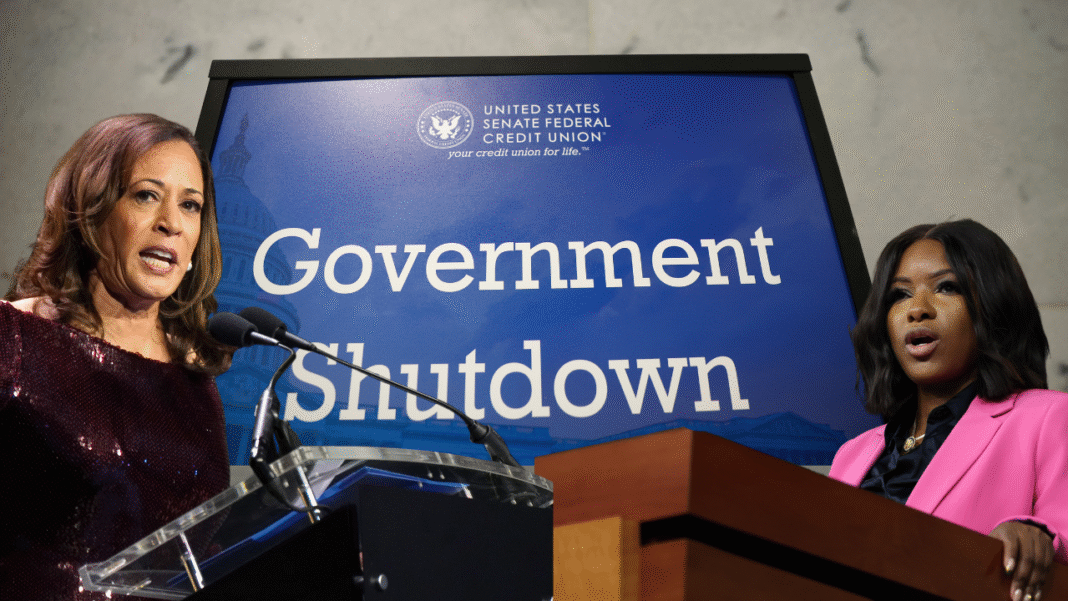Government Shutdown: A Tale of Partisan Conflict
As the clock struck midnight, the lights of the U.S. government dimmed as it officially shut down, marking a profound moment of political strife. After efforts from both the Republican and Democratic parties to push through funding bills failed in the Senate, a lapse in appropriations resulted in a government standoff. This decision was not merely about dollars and cents; it’s being described as a “culmination of bitter, extreme partisan divide” in Washington, as highlighted by experts like NPR’s congressional correspondent, Claudia Grisales.
The Prologue to Shutdown
Leading up to the shutdown, government agencies began to unveil messages that reflected increasing partisanship. One notable instance came from the U.S. Department of Housing and Urban Development (HUD), which displayed a politically charged message claiming that “The Radical Left are going to shut down the government and inflict massive pain on the American people unless they get their $1.5 trillion wish list of demands.” This stark proclamation set the tone for the controversies to unfold.
After the shutdown, HUD updated their message to underscore the effective stewardship of available resources: “HUD will use available resources to help Americans in need,” yet the implications of that initial language linger.
Voices of Dissent
In response to such aggressive rhetoric, Democratic leaders, including Rep. Jasmine Crockett and former Vice President Kamala Harris, voiced their concerns about the divisive atmosphere. Rep. Crockett critiqued the narrative being pushed by the administration, labeling it as a form of “gaslighting.” She noted the irony in a party controlling all branches of government yet finding ways to cast blame elsewhere.
Crockett asserted that the so-called “$1.5 trillion wish list” focused on essential services like health care, food assistance, and housing—vital lifelines for many Americans. She deemed it outrageous for partisan propaganda to dominate the HUD’s homepage during a crisis that affects so many.
The Legislative Battle
The discord in Congress centered around competing visions for spending. The Democrats presented a spending bill aimed at reversing cuts to Medicaid and extending subsidies under the Affordable Care Act. This proposal was met with a blockade from Republican lawmakers, who subsequently put forth a short-term funding bill. The “stopgap” funding proposal was rejected by Democrats unless it included provisions to grow healthcare subsidies, perpetuating the stalemate.
Former President Barack Obama added his voice to the fray, remarking that “Republicans would rather shut down the government than help millions of Americans afford health care,” emphasizing the human consequences at stake.
Accountability and Blame
In a decisive statement on Threads, Kamala Harris reiterated that Republicans wielding control of both the White House and Congress were responsible for the shutdown. “This is their shutdown,” she affirmed, stressing that they had every opportunity to govern effectively but opted for chaos instead.
Crockett echoed this sentiment, pointing out that the massive consequences of the shutdown would ultimately fall on everyday Americans. Her statement served as a call for accountability, asking citizens to recognize the political motives behind the crisis.
The Aftermath of Shutdown
With the government officially shut down, the ramifications are already evident in the lives of countless Americans reliant on government services. From delayed benefits to disrupted services, the effects are immediate and painful, particularly for vulnerable populations.
As conversations continue in the halls of Congress and across the nation, it remains to be seen how this political standoff will resolve. The broader implications of this shutdown extend beyond simple funding issues; they reflect deeper question marks about governance, responsibility, and the ability of elected officials to serve the American people effectively in times of crucial need.



